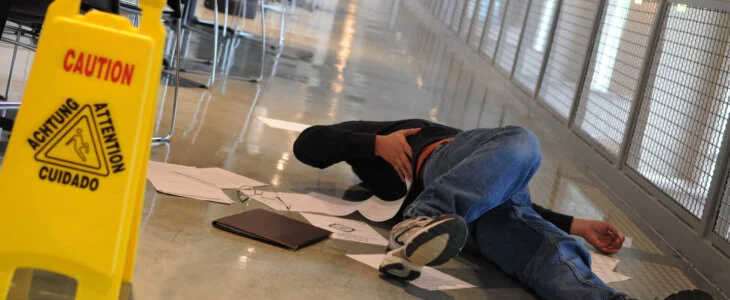Slip and fall cases in California require certain proof that the plaintiff must provide so that the jury or judge can decide whether the victim is entitled to compensation for their injuries. Taking these factors into account is crucial whether you are pursuing treatment and having to pay for costs or holding the at-fault party responsible.
Accidents in California Involving Slips and Falls
An injury case that ends up in court or that is settled usually has to do with the business of the plaintiff, like a store or establishment where a slip and fall occurs, or another party responsible for negligence, like a defective item or a vendor.
To prove negligence in California, the plaintiff must provide evidence covering the four criteria of negligence when there is no intentional harm to the victim. Having a lawyer at your side will help you present your case and gather evidence.
Slip and Fall: The Four Distinguishing Elements
Negligence has four aspects, but depending on the kind of accident, they can differ slightly from each other. A victim has an obligation to take care of the victim. Businesses have an obligation to take care of their consumers.
Defective products, on the other hand, may require the definition of responsibility or may present an entirely different situation. Due to the breach of duty, there is often injury to consumers or clients as a result of the breach of duty. An injured plaintiff must establish that there is a causal link between the breach and the injury for the courts to accept the injury.
Evidence of Injury
It is the sufferer’s responsibility to demonstrate that the incident caused the harm regardless of whether the incident involved a breach of duty or ordinary carelessness. In the majority of cases, a doctor can link the injury to the accident.
In contrast, the courts may order an independent doctor to examine the slipping and falling victim and determine the extent of the injury. The case may be dismissed in court if there is any suspicion that the plaintiff is lying. The medical records that show your injury must be strong evidence if you want to settle your case with the insurance company.
Negligence as Evidence
It is usually the plaintiff’s responsibility to prove negligence in California personal injury cases. The evidence must show that the slip and fall were caused by a hazard or hidden danger. A property with inadequate lighting can also result in these injuries.
Taking adequate safety precautions could lead to a lawsuit being filed against the company or provider. In the event of an imminent hazard, the owner of the business will need to remove it or notify others about it within a limited time frame.
Factors of Reasonability
In addition, the judge or jury will evaluate whether the victims’ and the property owner’s or tenants’ behavior was reasonable. Taking the same step as a reasonable person would in this situation be contrary to what they would do.
An individual who appears to slip and fall on purpose or is fully aware of slippery, slick ground should avoid it in reasonable circumstances. An individual may be able to prove negligence if he or she faces hidden dangers or is unable to evaluate the danger.
The court also considers what would happen in a similar situation if the owner or tenant were in the same situation. Would the owner or tenant take action if there was a threat that they could eliminate with enough time?
Some circumstances, however, do not require avoiding the hazard from arising in others’ presence. They may have to erect signs or have an area quarantined. Owners or tenants whose actions are reasonable may be able to build a stronger defense case against the injured party.
How Can a Lawyer Help?
When a person is injured in California, an attorney is often needed to represent them. In order to establish negligence or breach of duty, a lawyer will have to prove that the defendant failed to take reasonable steps to avoid the injury. Contact Deldar Legal Injury Attorneys for a free consultation if you have a slip and fall case in California.


